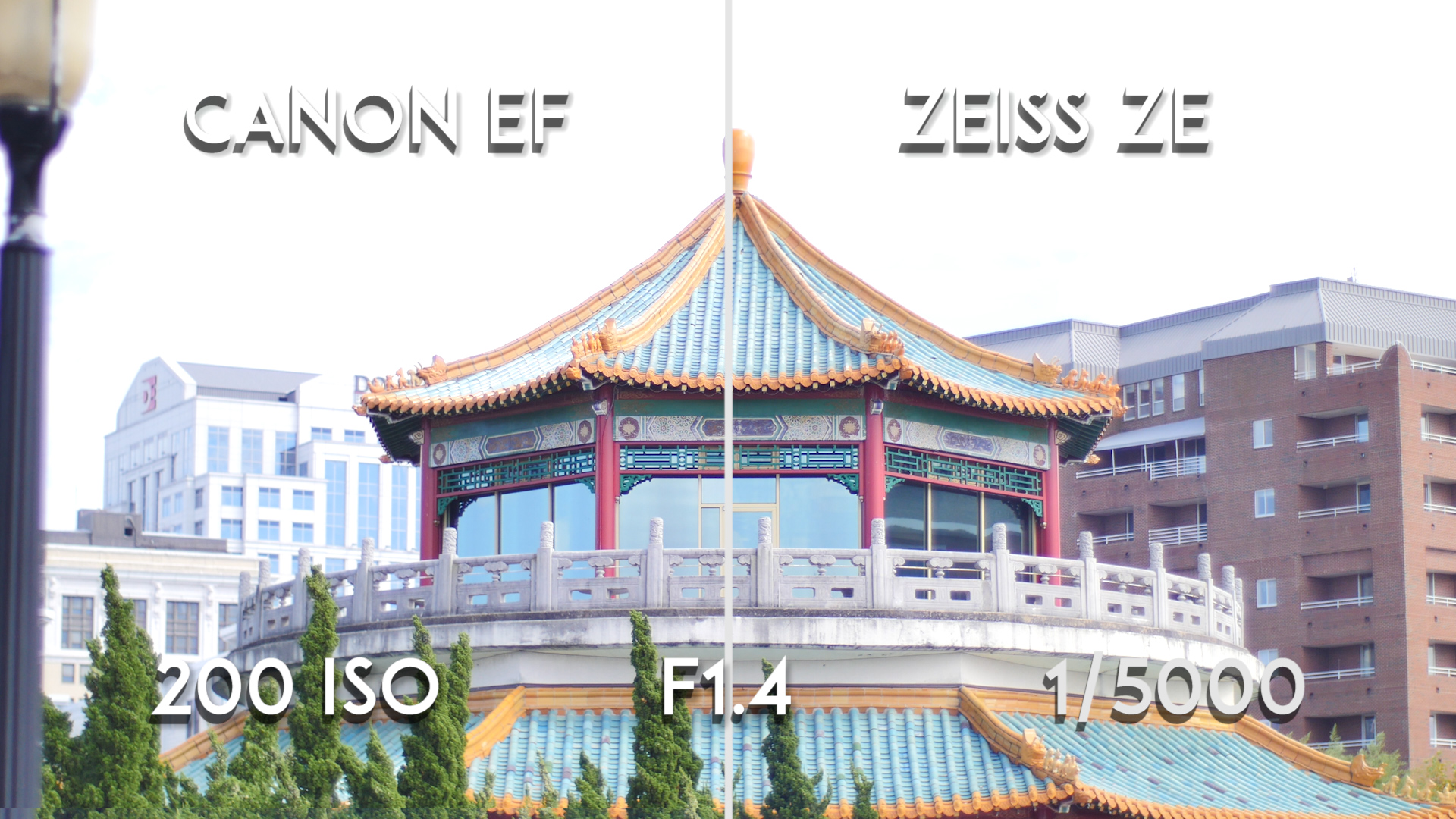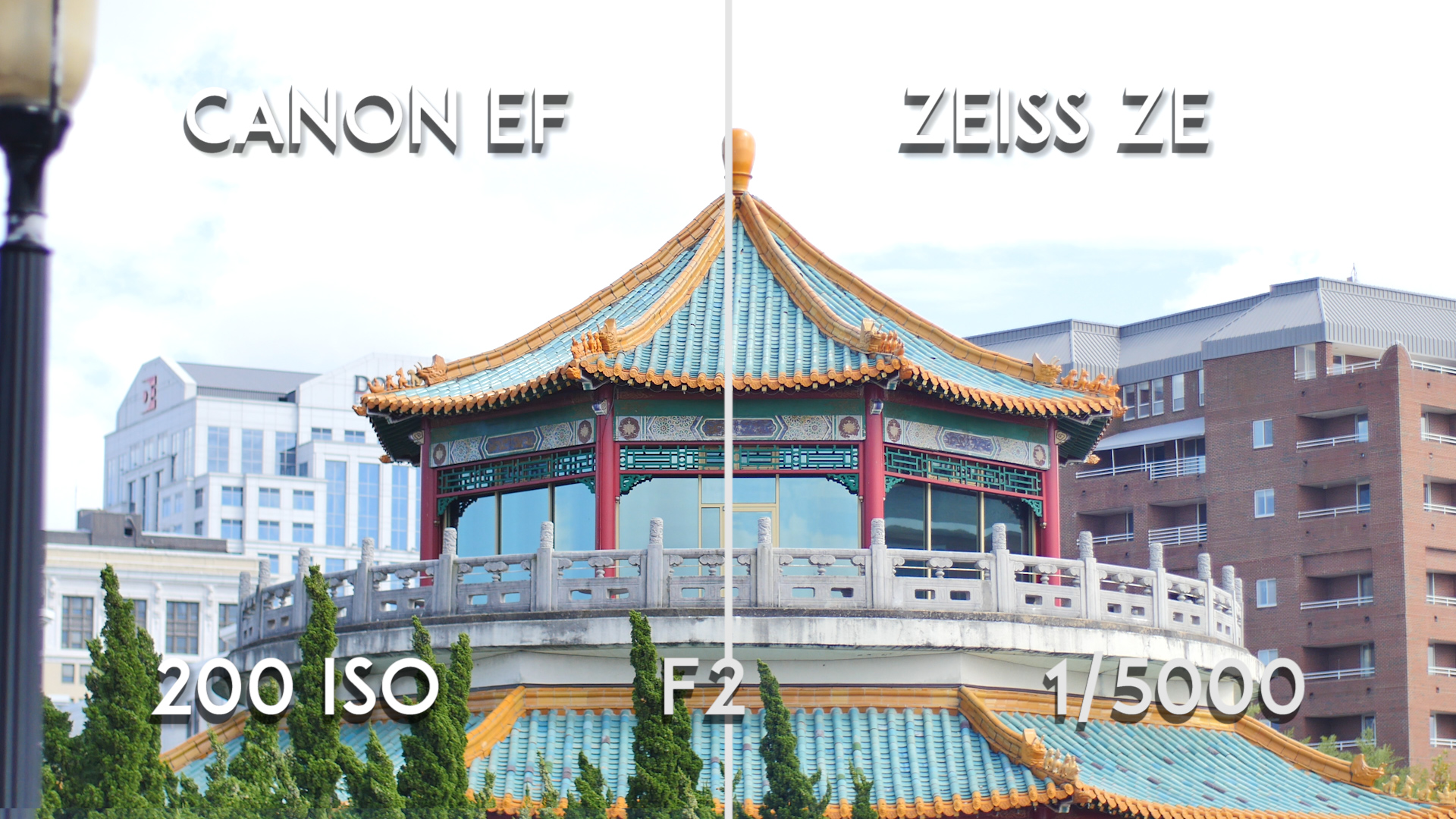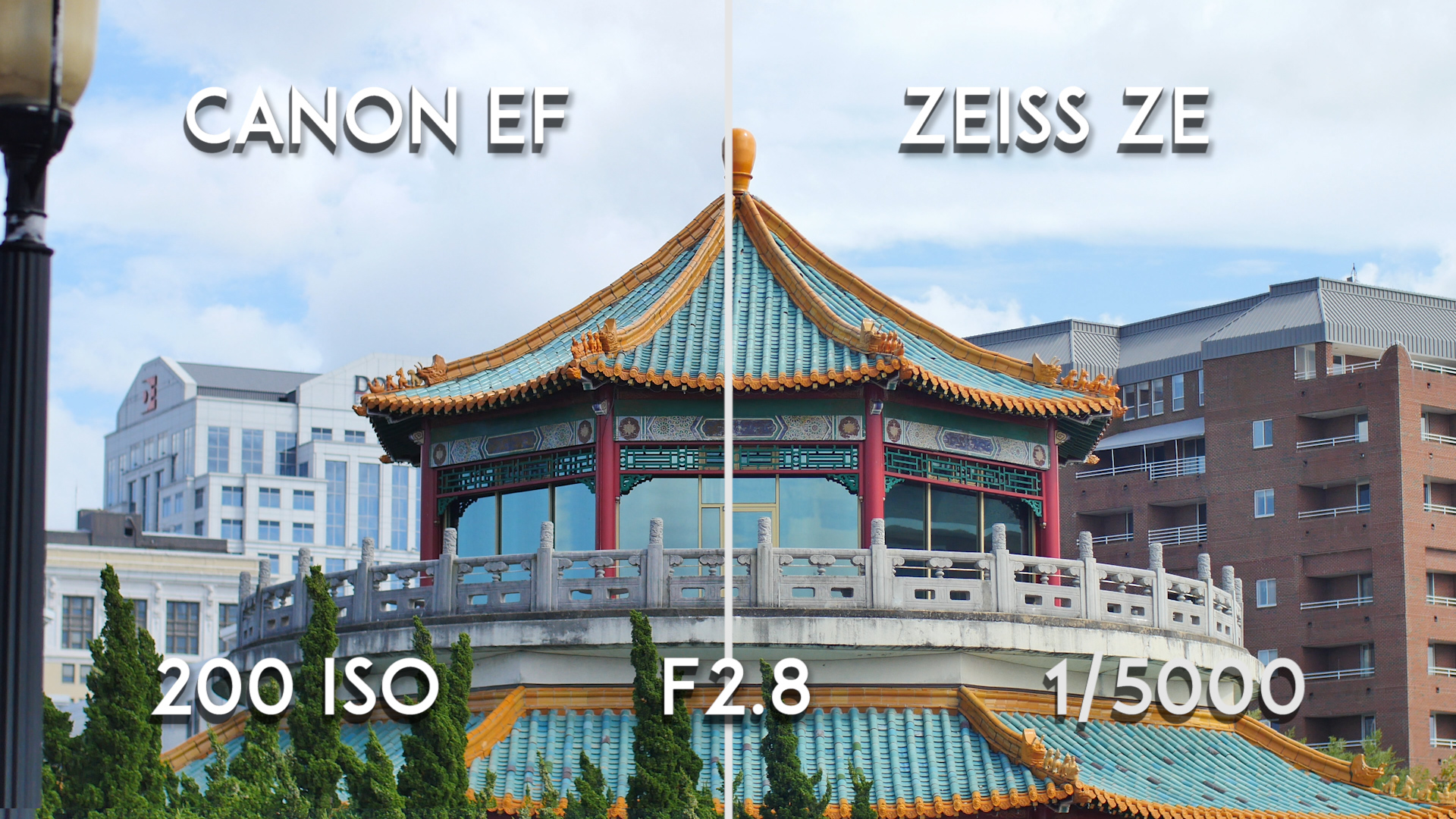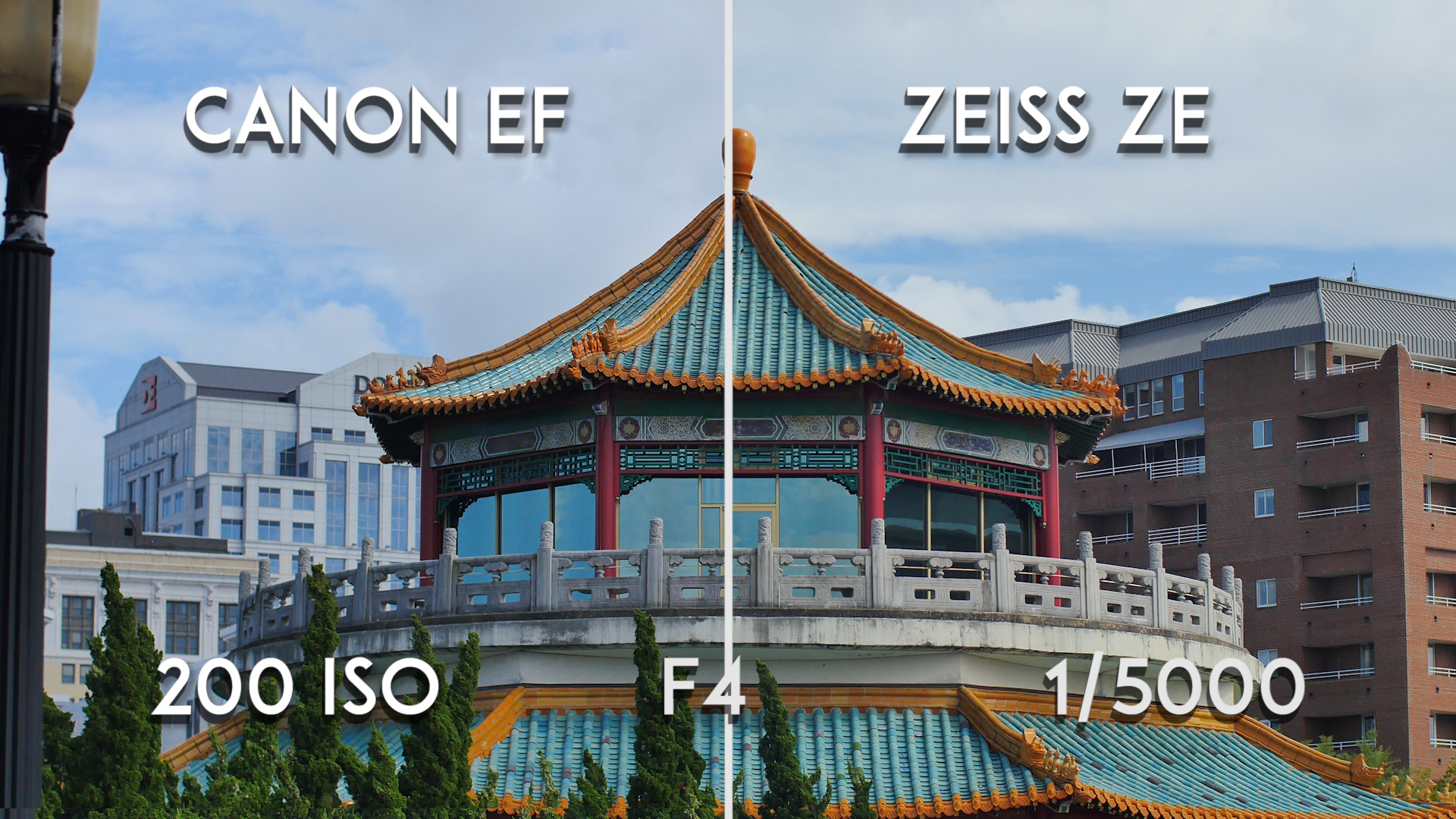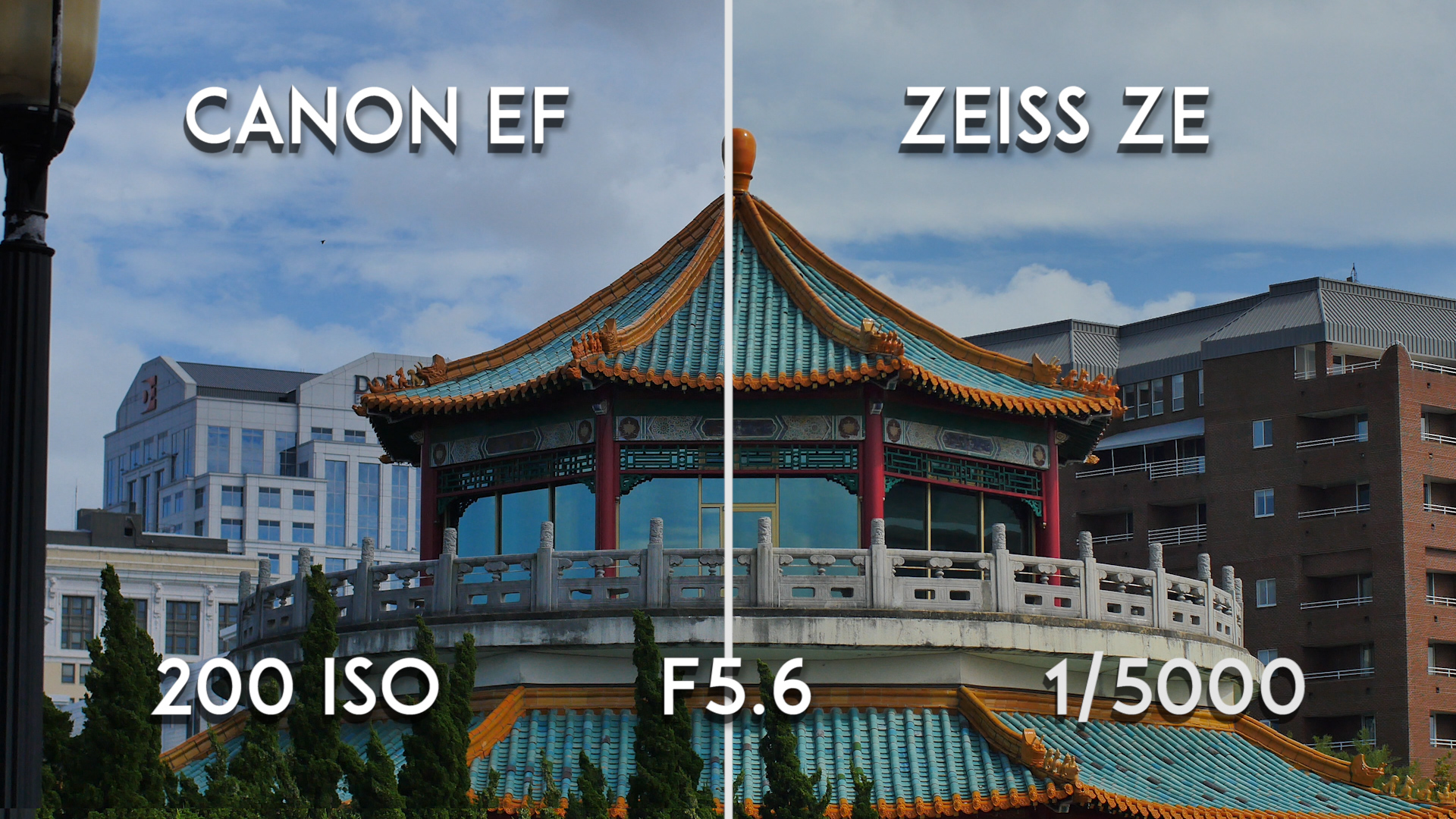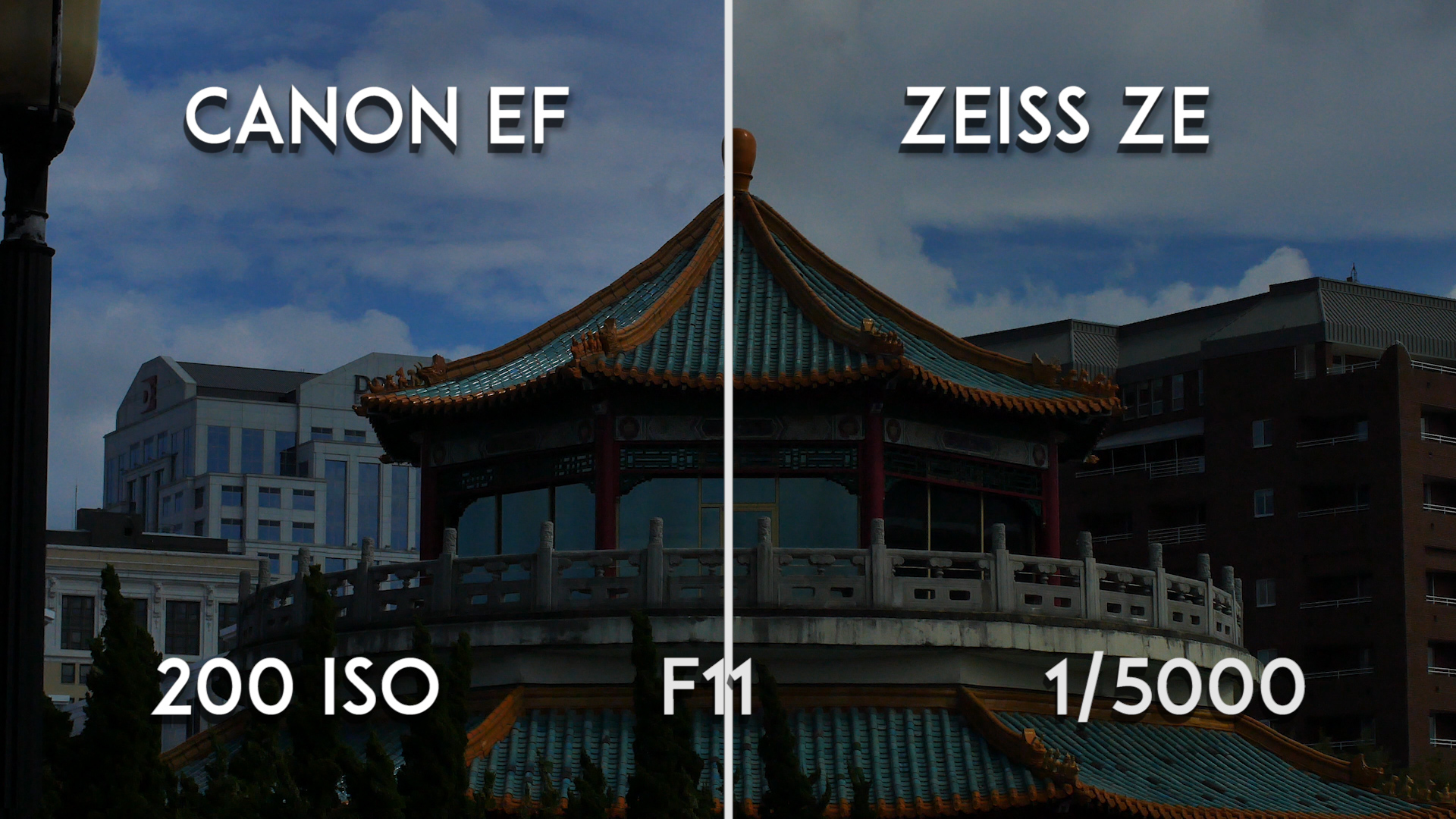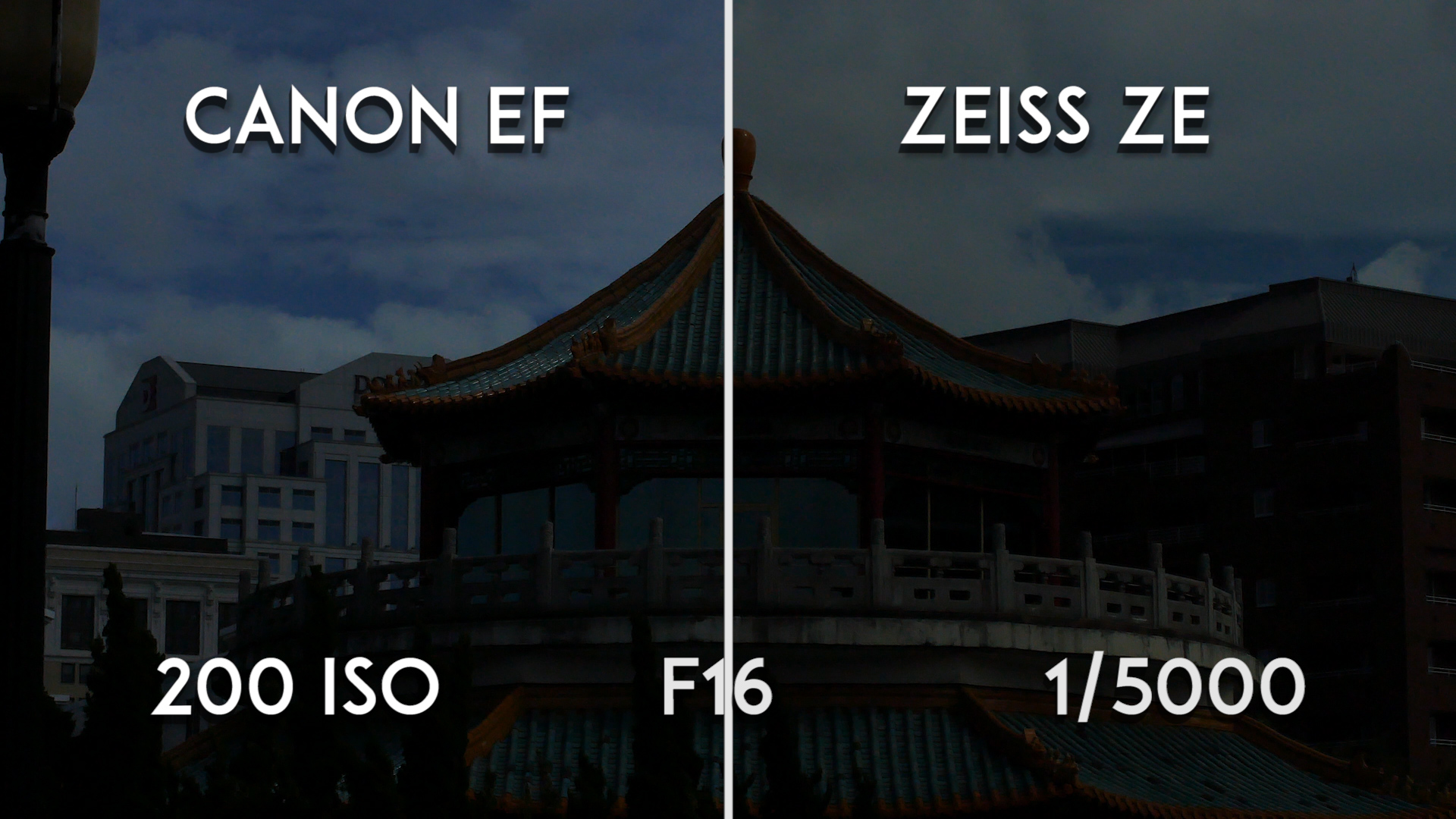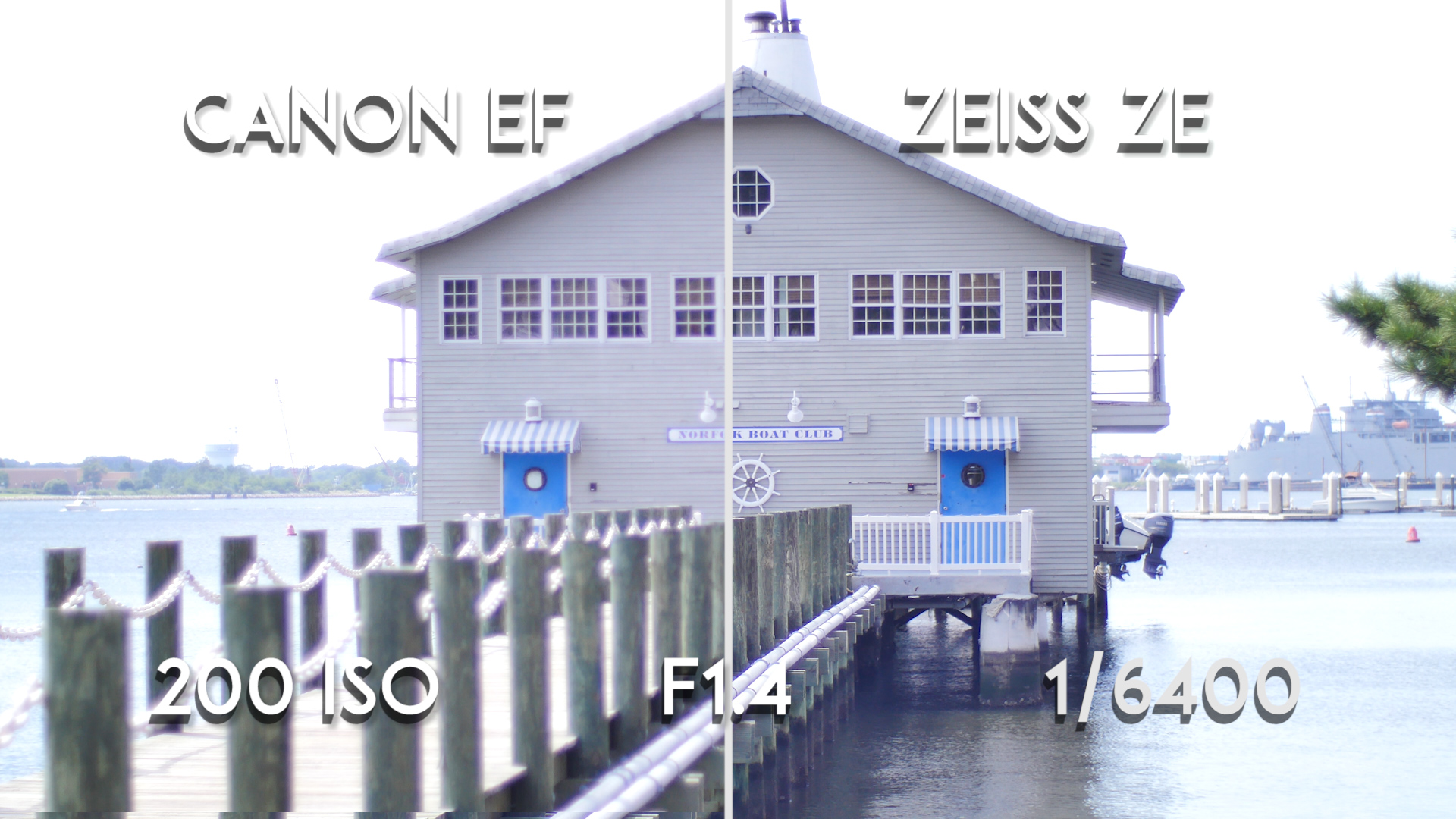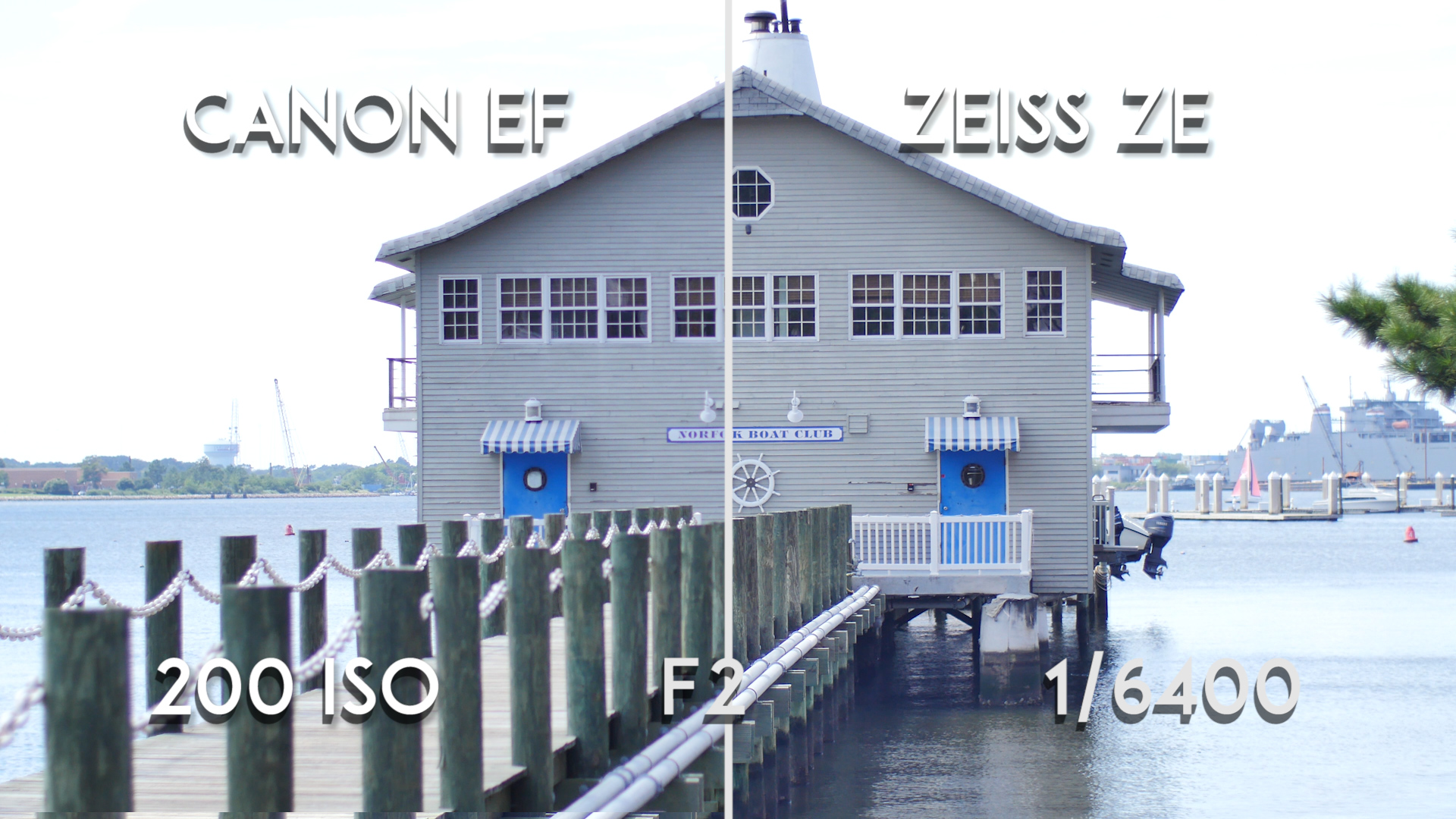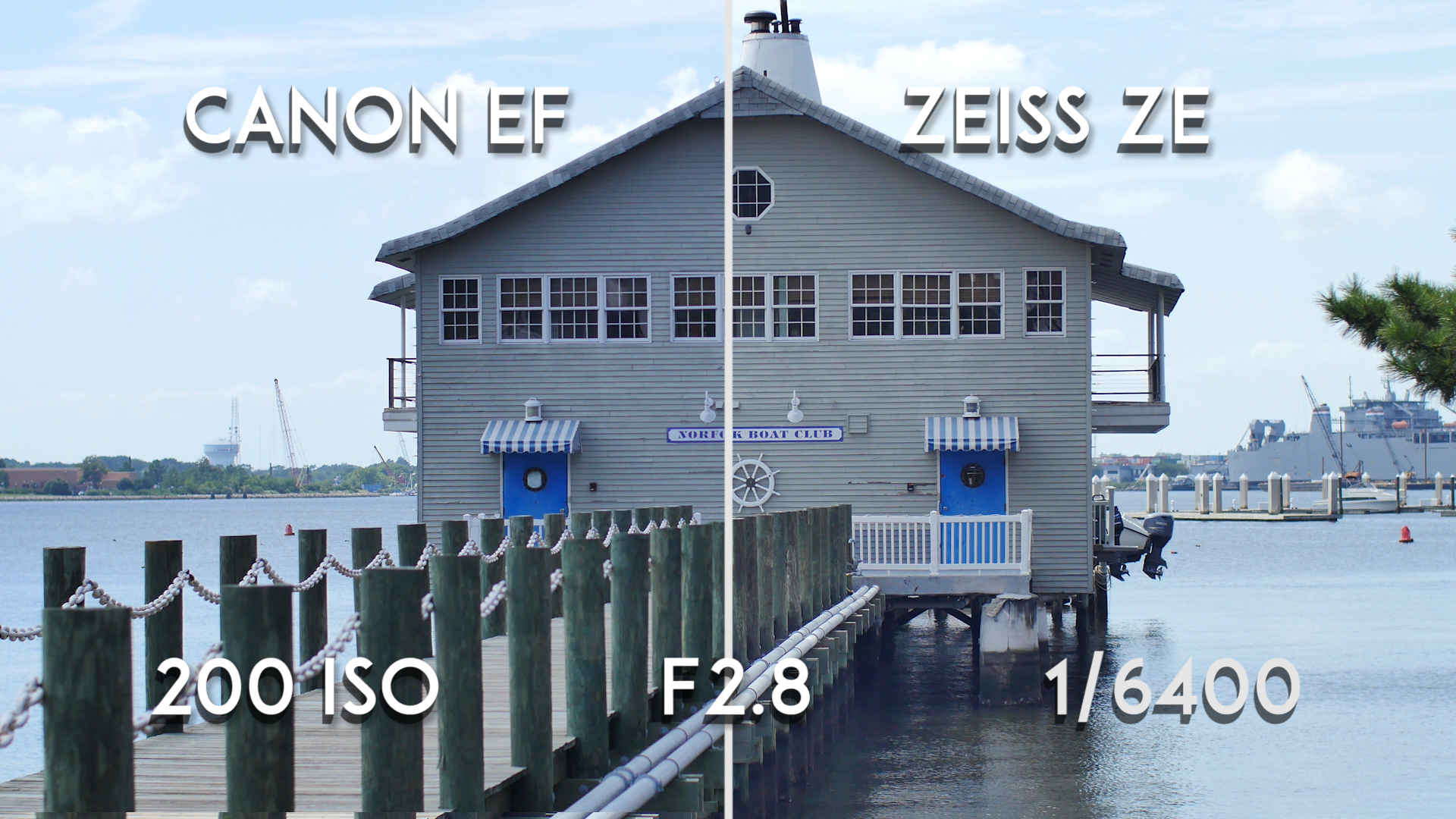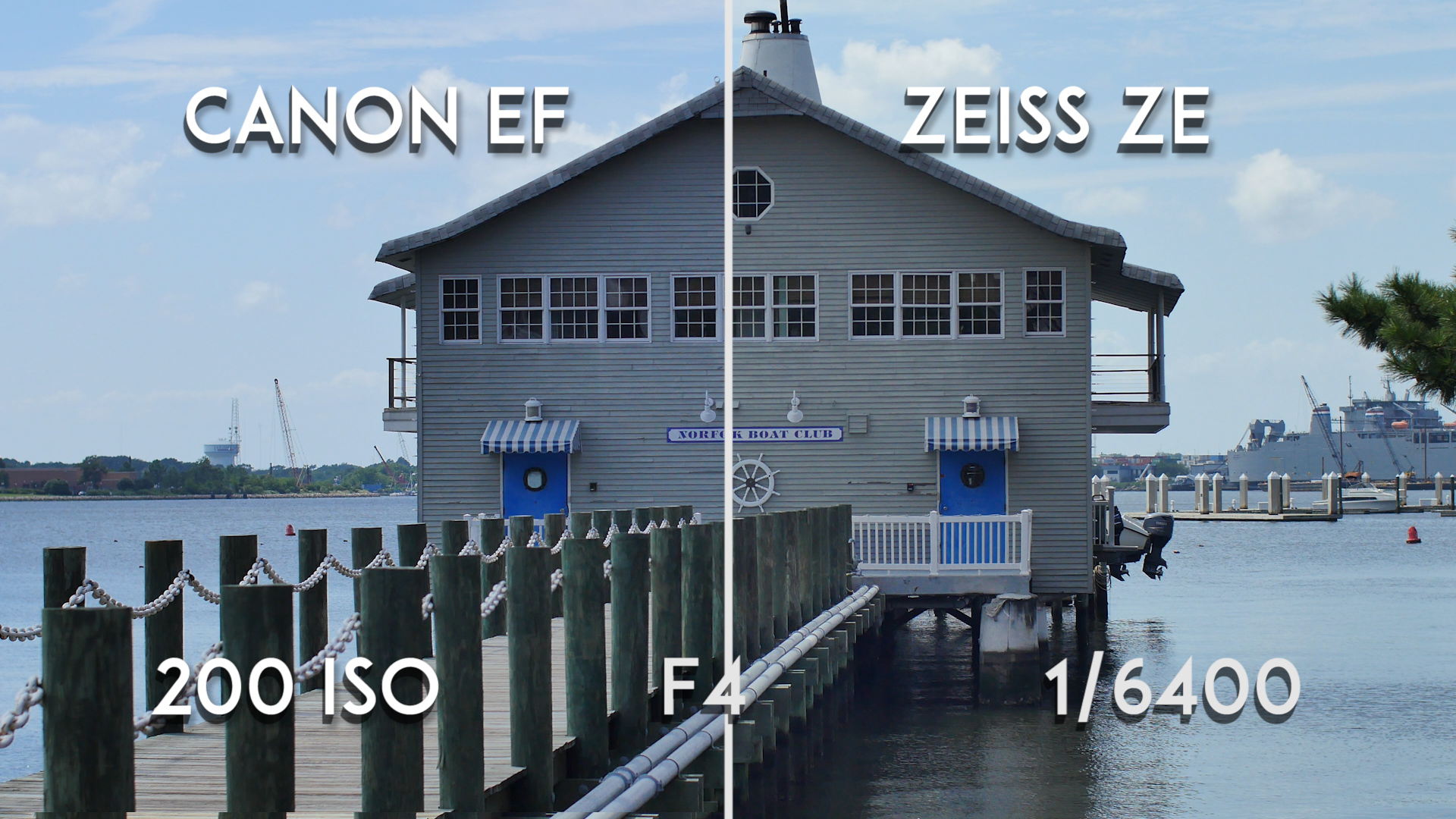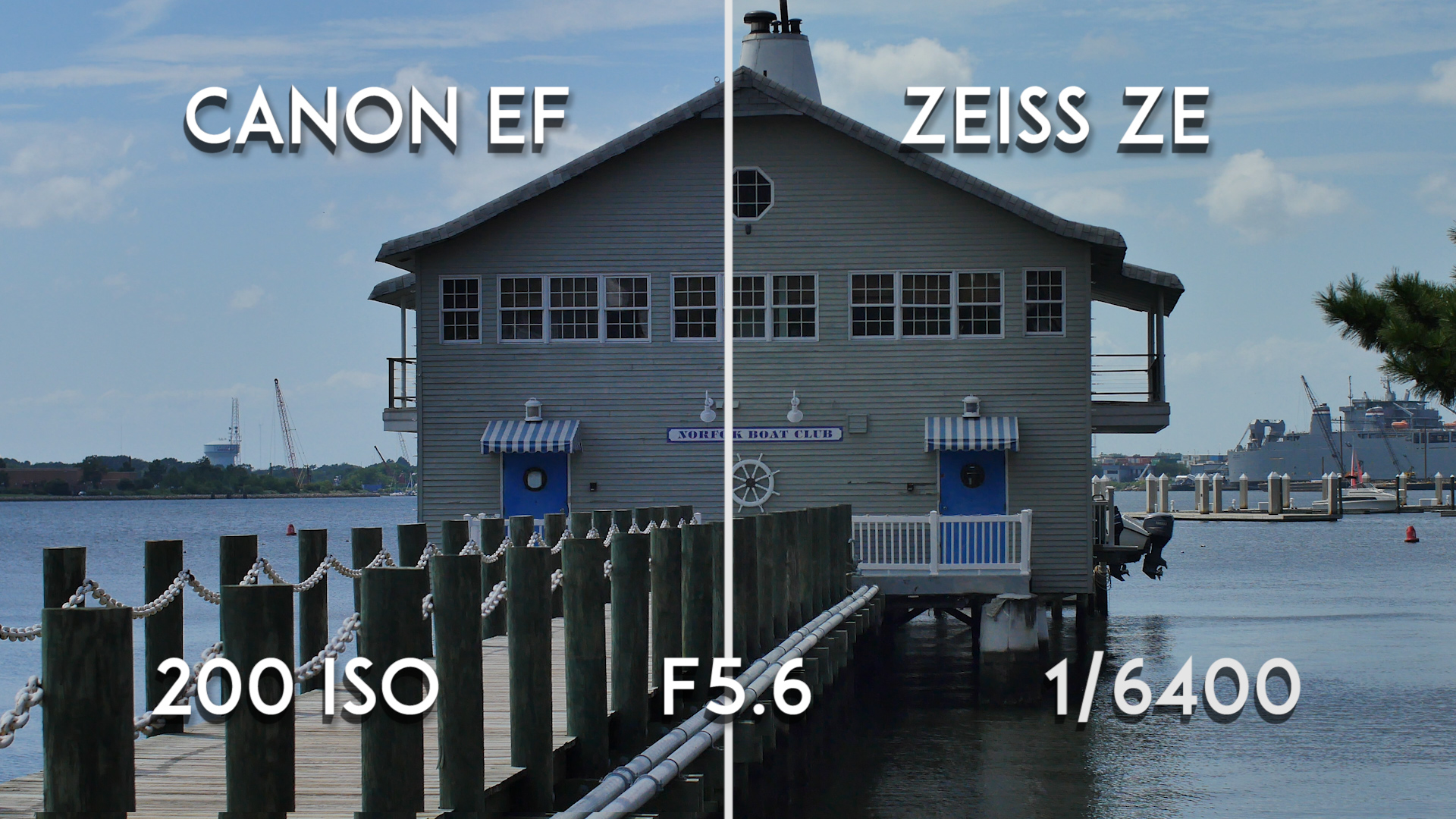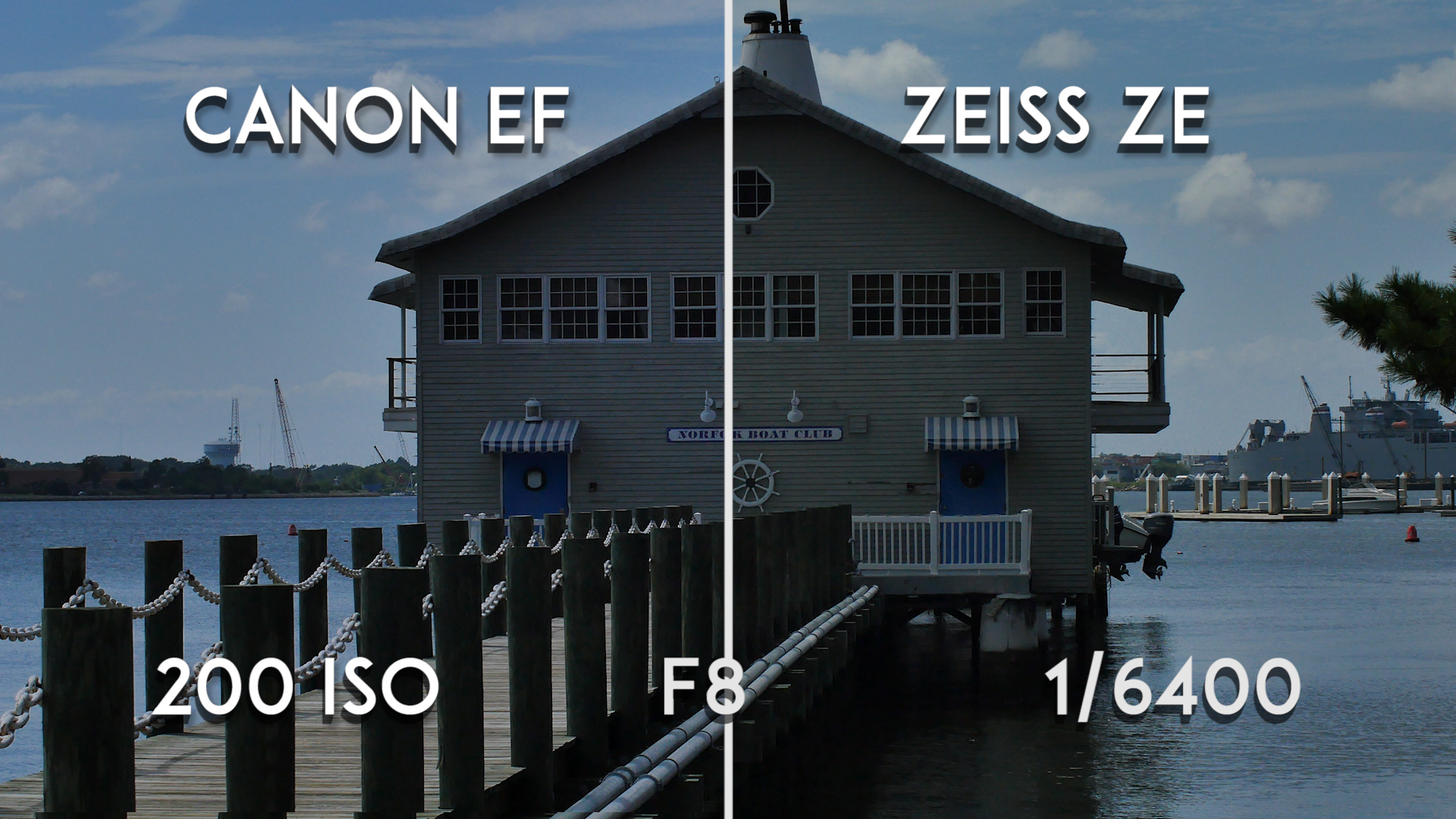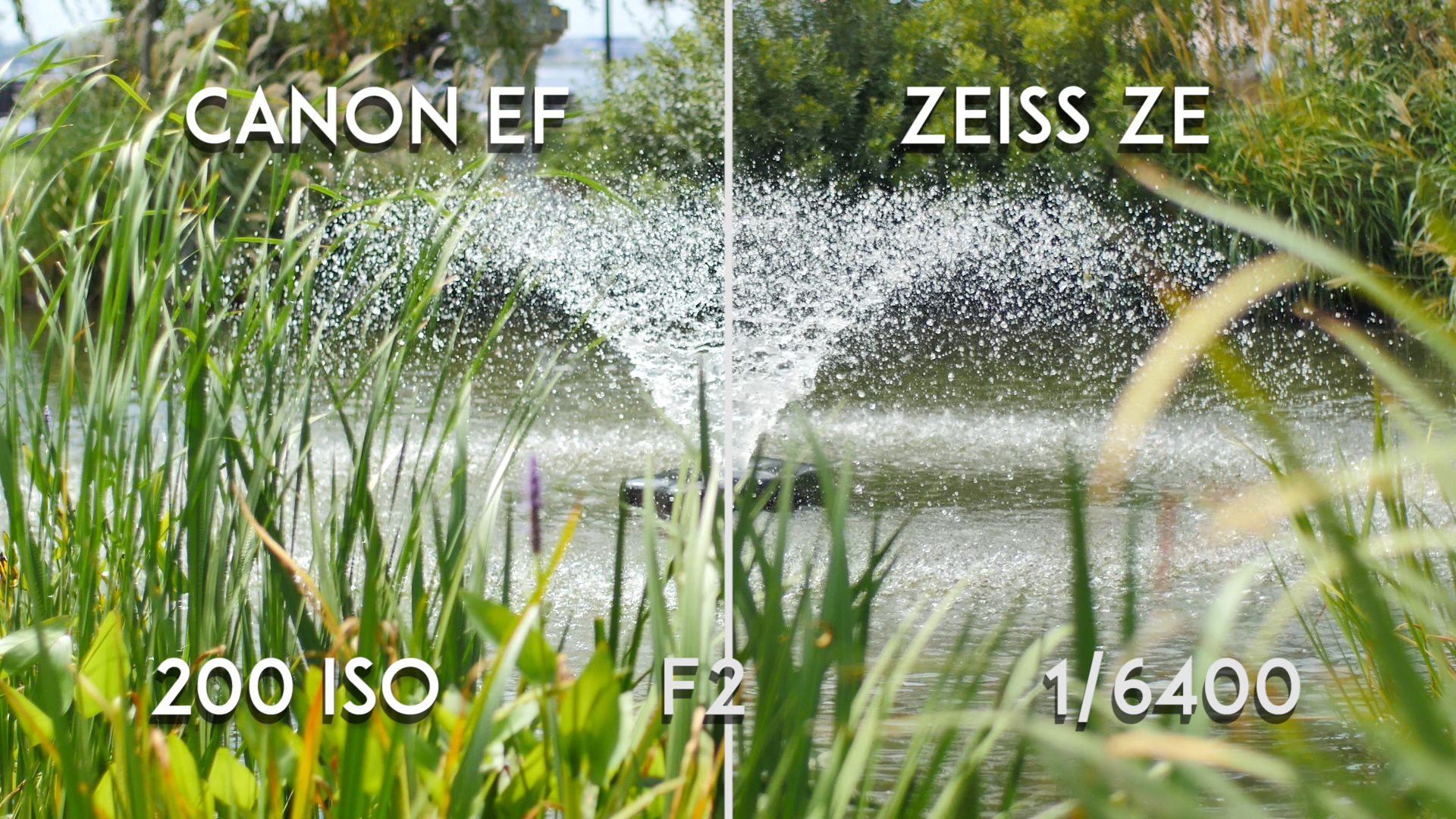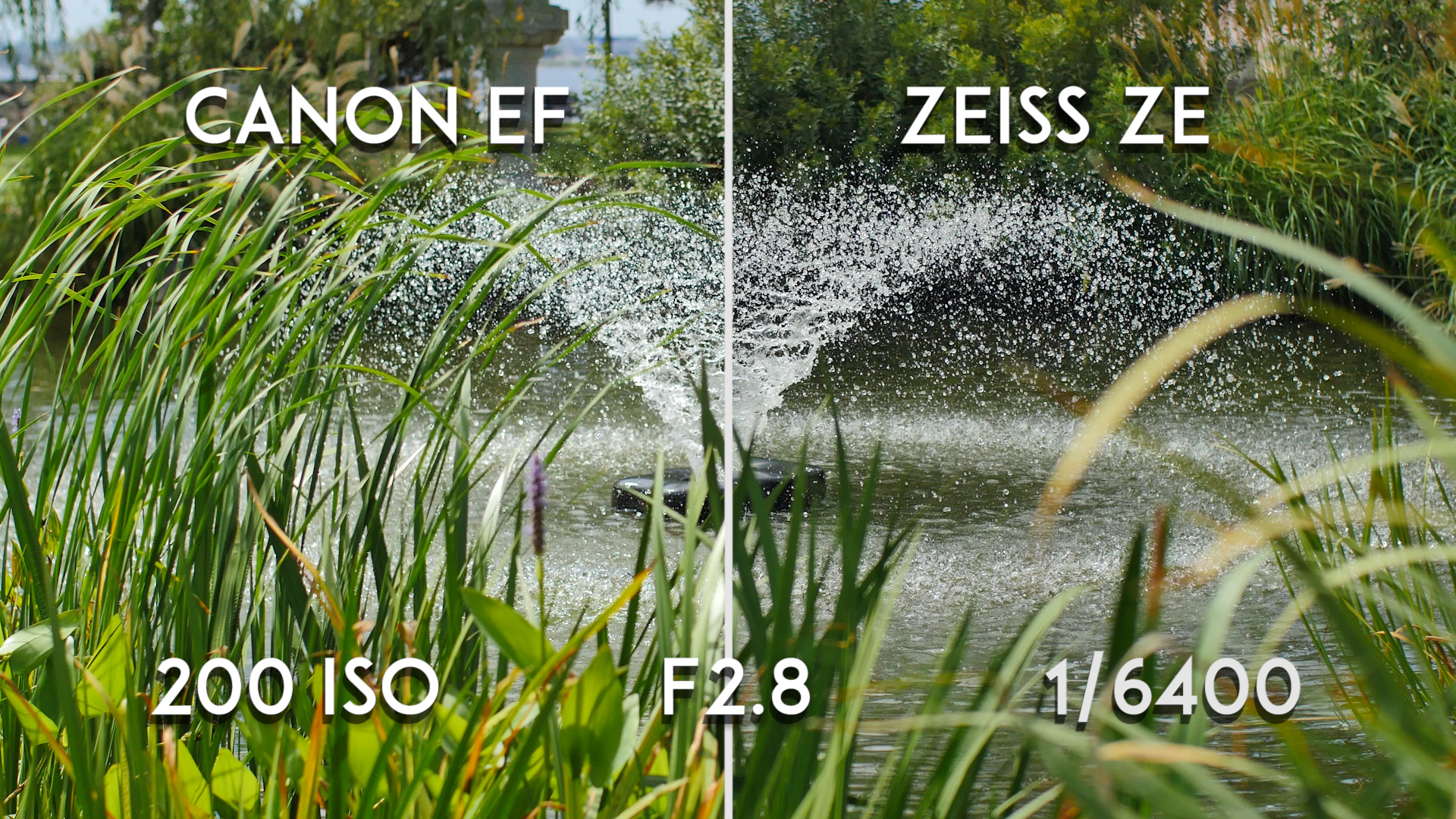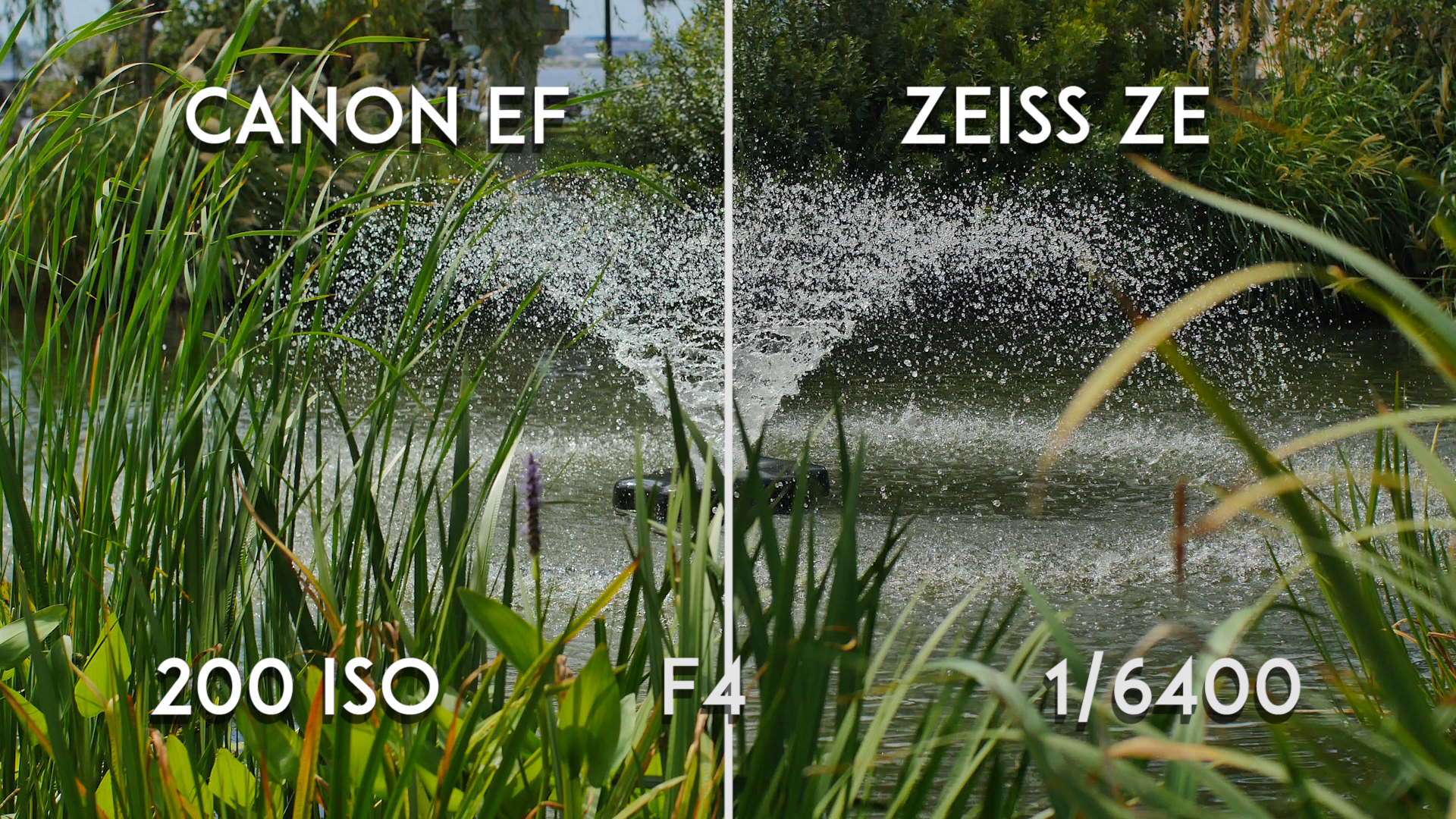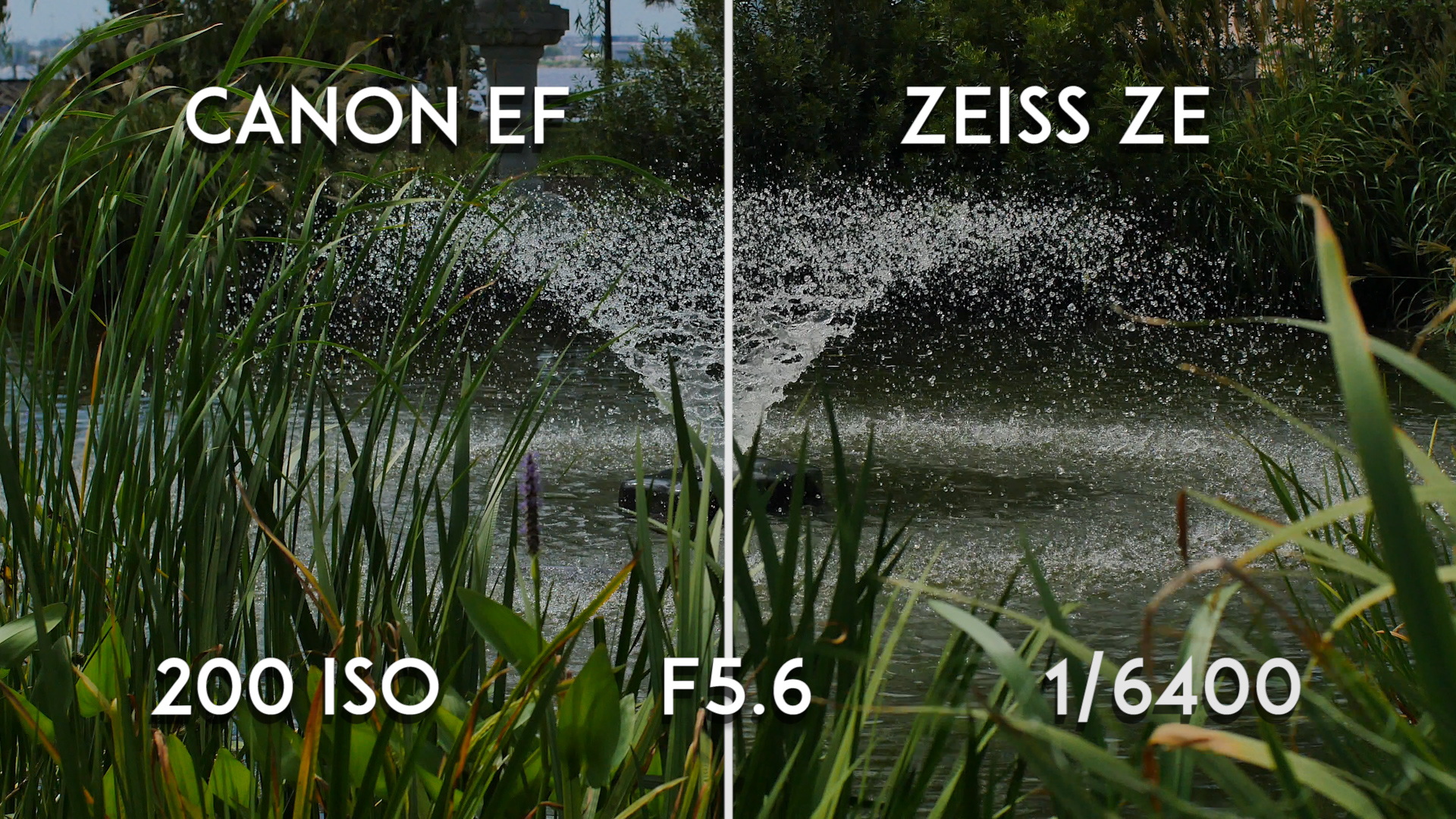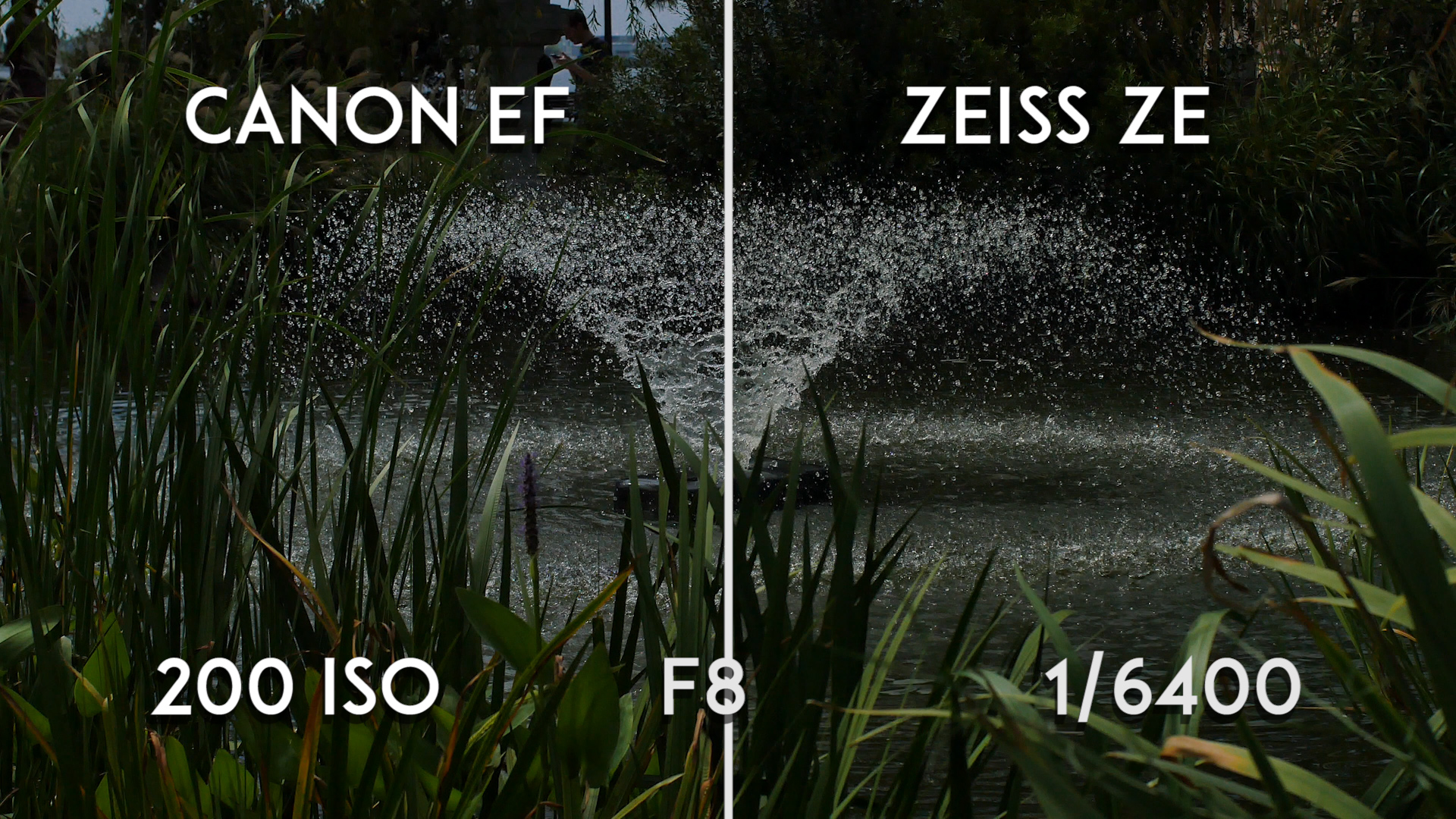The Canon EF 50mm F1.4 is much less expensive than the Zeiss Planar 50mm F1.4. That major price difference may seem like a good reason for most to go with the Canon EF 50mm lens, but it’s important to note all the major differences between these lenses and see which is the right one for you.

The Zeiss Planar 50mm feels much more hefty than the Canon EF 50mm. It’s internal mechanics are all made from metal and glass and it usually lasts for life. It’s a major investment up front but will pay off significantly down the road. The Canon EF 50mm however is built from a lot of plastic parts and definitely seems to have a limited life span.
The Canon EF 50mm also has a sophisticated autofocus system which is nearly useless to you if you wish to shoot video. It doesn’t provide hard stops on the focus ring which makes it hard to tell when you reach critical focus. The Zeiss Planar 50mm however has a completely manual focus ring with a much longer throw than the Canon EF along with hard stops on either end. This is perfect for focus pulls and provides a pleasing range of motion while changing focus.
Both lenses have an electronic iris control. This poses a major problem if you would like to avoid clunky full stop adjustments while recording. It also makes it more expensive to connect the lens to any camera besides a Canon EOS body with an adapter. Adapters with electronic connections are more expensive than the ones without and are usually less durable.

If you plan to use the Zeiss Planar 50mm lens on a Micro Four Thirds camera, then I’d recommend choosing the Nikon version of this lens. This is called the Zeiss Planar ZF 50mm rather than the Zeiss Planar ZE. The manual focus ring twists in the opposite direction, but this version has manual aperture adjustment. This will allow you to manually adjust the iris and ultimately you will have the option to declick the lens to turn it into a true cine beast.
In this comparison, I tested both lenses with a Panasonic GH4 using the Metabones Canon EF to Micro Four Thirds Speed Booster. This is one of the best adapters out on the market for Canon EF lenses. It widens the focal length 0.71 times, increases the maximum aperture by one stop, and increases the overall sharpness.

Typically, Zeiss lenses are considered to have some of the best quality glass among their competitors and it’s clear to see why. In my opinion, the Zeiss Planar 50mm provides much better contrast and resolution than the Canon EF lens. This will significantly help in post production especially during color correction.
Many Zeiss fans like to mention the character of Zeiss lenses as well. Character is a personal preference rather than a quantitative measurement in quality, but it’s a major factor in deciding which lens is right for you. Seeing the Zeiss Planar 50 compared to other lenses will help show you what that “character” really means and if it’s worth shelling out the extra cash.
Overall, I am very impressed with the optical performance of the Zeiss Planar 50mm F1.4 lens. Personally, I wouldn’t buy either lens for myself but it’s clear that the Zeiss 50mm F1.4 is the best choice if you wish to shoot primarily video. It’s a big investment up front but will pay itself off for many years to come.


